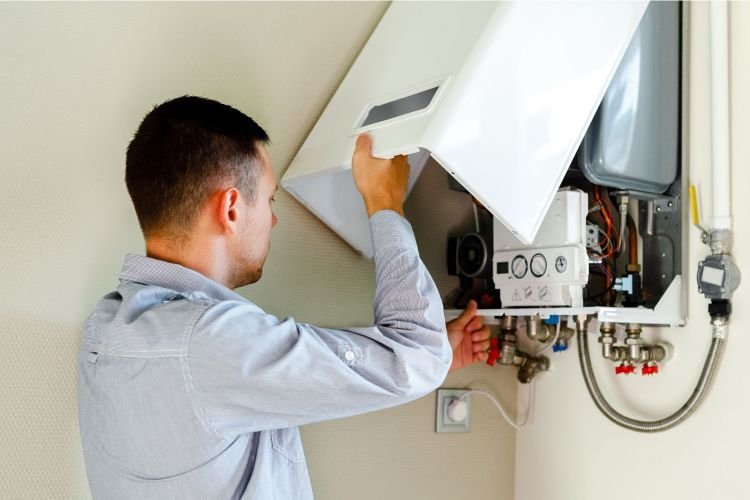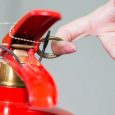 It takes a lot of skill and expertise to operate a boiler. Despite this, it’s one that seldom ever has to be fixed. One of the many benefits of using a boiler is that it is long-lasting and often requires just a little amount of upkeep. Since of this, you could be taken aback when you find difficulties with your boiler, but you should prepare yourself because it is inevitable that this will occur at some time.
It takes a lot of skill and expertise to operate a boiler. Despite this, it’s one that seldom ever has to be fixed. One of the many benefits of using a boiler is that it is long-lasting and often requires just a little amount of upkeep. Since of this, you could be taken aback when you find difficulties with your boiler, but you should prepare yourself because it is inevitable that this will occur at some time.
Get fast reliable Boiler Repair service with a one-year guarantee and on a no-fix no fee policy.
Consider some of the issues you can have if you possess a boiler instead of a forced-air heating system like a furnace. It is beneficial to have an idea of what to anticipate, but it is even more beneficial to be aware that regular preventive maintenance on your house could be a wise choice.
Leaking & Dripping
If you look around your boiler tank and its attached pipes, can you see any signs of excess water? The boiler tank is a major source of leaking and dripping. Rust may accumulate in boilers over time, which can cause them to age prematurely. You can clean it with tube wire brushes. When something like this happens, the parts of the system may lose some of their flexibility.
Old components, an aged seal, a pressure valve set too high, an ongoing system overload, or even pipe corrosion may all contribute to leaking or drips. Contacting a local heating professional is your best bet if you want to figure out what’s causing the leaking or dripping sounds you’re hearing.
Putting Out the Pilot Light
The thermocouple in your boiler is useful for controlling gas flow into the boiler. The blue flame below your boiler is responsible for keeping the system lighted and operating properly. When the pilot light goes out, it almost always indicates a problem with the thermocouple or that it has failed. Even while your more recent boiler system should not have this issue in most cases, it is still possible that it may.
Relighting the flame may be all that is necessary to fix your pilot light. However, before you go and start relighting gas burners, you should be sure your boiler is getting gas. It’s possible that your gas has been shut off throughout your home or the gas stopcock isn’t switched on if there is no gas getting to the boiler.
Kettle-like Sounds
Kettling has an unusual rumbling sound. The sounds are caused by the heat exchanger being overheated due to these deposits, which might obstruct the water flow. Heat exchanger deposits may accumulate over time. Constant water use causes this buildup. Thus it’s typical.
When a boiler kettles, it’s working harder to provide heat or hot water. It raises expenses and shortens boiler life. Kettling is more frequent in hard water settings, although it may also happen in gentle water.
Pipe Frozen
Modern boilers condense. The exhaust gases produced by the boiler are vented out via a condensate pipe in this setup. When it’s cold, your boiler’s condensate line may freeze. Water freezes and blocks.
May fix the problem by thawing out the condensate pipe. You may defrost the pipe by using hot water but not boiling it or a warm towel. Use gloves and other clothing to prevent harm if you don’t employ a heating professional to repair the frozen condensate line.
Hot Water and Heating Irregularities
If your boiler loses heat or won’t heat water, it may have faulty components. Even if the boiler doesn’t heat air, it may cool rooms.
Regularly fluctuating hot water and heating might indicate that your thermostat needs to be adjusted or replaced. Still, it could also be a sign of other internal parts deteriorating. Someone without heating equipment expertise should not replace the boiler valve, diaphragm, or airlock.
Inaccurate Thermostat
The thermostat on your boiler helps you keep the heat and hot water in your house at a comfortable level. If it reads the incorrect temperature or shuts off the heater, it may need to be fixed or replaced.
Thermostats might become old, or their wiring can fall loose. Older boilers have a faulty thermostat. It may not be the age or wiring. Perhaps the settings are incorrect, or the thermostat got pushed. Ensure the thermostat is “on” and set to warm your house.
Unheated Radiator
Radiators are a possible heating source. Unless these radiators heat up, you won’t get warm. If the radiator’s bottom is hot and the top is cold, it’s usually a sign that the radiators aren’t functioning correctly. It might be due to sludge or filth in the boiler-to-radiator transfer section or off-balance radiators.
If your radiator is chilly, bleed it or contact a heating professional.
If you are having problems with the warmth provided by your boiler, you may be able to fix the issue and get it functioning normally again in a short amount of time. However, working with boilers may be an extremely risky endeavor. A wide variety of issues may arise with boilers, and a wide variety of elements need to be taken into account for each issue.




